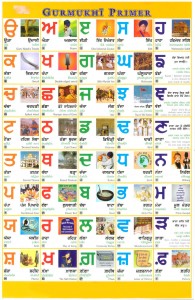
This past week, I saw this advertisement about the “GurSikh Speed Meeting.” For those of you who have no idea the Sikhnet’s Gursikh Speed Meeting is obviously (and admittedly) the Sikh version of speed dating. According to the organizers of the program: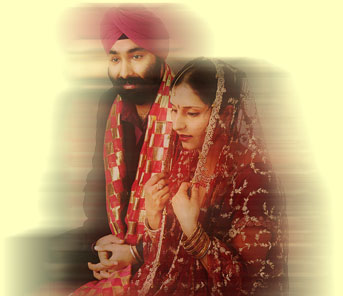
The concept is quite simple. An equal number of Sardars and Sardarnis register. On the event date, each Sardar will meet each Sardarni one-on-one and chat for a specified number of minutes rotating till they have met all the Singhnis. This face to face style of meeting has spurred much interest, in addition to, respecting the participant’s privacy. Only if there is an agreed ‘CLICK’ will an exchange of contact information occur.
I remember when I first saw Sikhnet advertising this a couple of years ago and thinking to myself, “this is bold.” I don’t necessarily think dating for Sikhs is anti-gurmat, but dating is definitely still taboo in A LOT of Punjabi Sikh families.
 Once again, Indian-Americans have been unwillingly thrust into the heart of a contentious American political battle. For those of you who don’t remember, in 2006, incumbent Senator George Allen singled out and subsequently called an Indian-American, S.R. Sidarth, “macaca” while on the campaign trail. See video here. As The Washington Post’s national political reporter noted, Allen’s use of that slur was a “turning point” in his failed reelection bid, and became “an everlasting part of the political landscape.”
Once again, Indian-Americans have been unwillingly thrust into the heart of a contentious American political battle. For those of you who don’t remember, in 2006, incumbent Senator George Allen singled out and subsequently called an Indian-American, S.R. Sidarth, “macaca” while on the campaign trail. See video here. As The Washington Post’s national political reporter noted, Allen’s use of that slur was a “turning point” in his failed reelection bid, and became “an everlasting part of the political landscape.”
Just a few days ago, presumptive Democratic nominee Barack Obama selected fellow Senator Joe Biden to serve as his running mate. In 2006, Senator Biden said, “In Delaware, the largest growth of population is Indian-Americans, moving from India. You cannot go to a 7-Eleven or a Dunkin’ Donuts unless you have a slight Indian accent.” See video here.
Senator Obama’s decision has generated renewed interest in the 7-Eleven gaffe. See, e.g., here and here. The question is, should we care? In this post, I argue “yes.”
A few days ago Sikhnet News posted a story about the Dastarbandi/Pagri di Rasam/Turban Tying Ceremony of Harmanas Singh, a 16 year old young man in California. 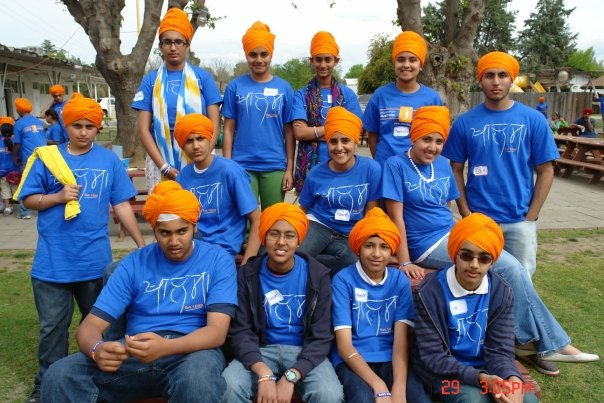 While the story gave only a brief explanation for the ceremony it got me thinking about the significance of the ceremony in the Sikh community in general: why we perform the ceremony, how wide spread it is, and how it pertains today to Sikh women.
While the story gave only a brief explanation for the ceremony it got me thinking about the significance of the ceremony in the Sikh community in general: why we perform the ceremony, how wide spread it is, and how it pertains today to Sikh women.
A couple of websites describe the ceremony like this:
People who have lived in India would know the turban tying ceremony known as Rasam Pagri (Turban Tying Ceremony). This ceremony takes place once a man passes away and his oldest son takes over the family responsibilities by tying turban in front of a large gathering. It signifies that now he has shouldered the responsibility of his father and he is the head of the family. [Source]
The explanation is a bit off –because the ceremony seems more for the passing of personal rather than family responsibility. While there may have been a time when the ceremony signified the passage of family leadership – I think in the Sikh faith the ceremony has come to signify the shouldering of personal responsibility for young Sikhs. The dastarbandi ceremony represents something different for Sikhs – it is as Guru Gobind Singh intended it – a stamp of identity for Sikhs and the responsibilities that being a Sikh entail.
From 7-Elevens to liquor and 99 cents stores, many Panjabi Sikh immigrants build a life for themselves as store workers. Working at these locations gives them a start in America, while engaging with its harsh realities. Regardless of educational background or the pind/shari divide, Panjabi Sikh immigrants work long hours into the night seven days of week trying to build a stable economic future for them and their families. On August 04, 2008, Inderjit Singh Jassal at the age of 62, was one of these Panjabi Sikh immigrants, who was murdered at a 7-11 store during his usual 13-hour shift in Phoenix, Arizona. Jassal had moved to the US nearly 20 years ago, while his wife and two adult children remained in India.
SALDEF reports that:
Mr. Jassal was working at a 7-11 store in West Phoenix when a black male, later identified as 27 year-old Jermaine Canada, walked in with his two children, aged 2 and 6. According to the surveillance video, the two individuals had a short conversation, at the end of which Mr. Canada pulled a concealed firearm from his shirt and fatally shot Mr. Jassal.
The most ironic aspect of this case is that no motive as been found. According to surveillance video there was no angry exchange between Jassal and Canada and nothing was stolen by the murderer.
SALDEF believes that this killing was nothing other than “… a heinous crime motivated by hate”.
According to one of Canada’s relatives, he had a history of drug abuse and mental illness. At the time of the killing, he was under supervised release following 2 years in prison for violating his probation, for a prior dug conviction, with a weapons charge.
Currently, Tajinder Singh Jassal, a nephew of Inderjit Singh Jassal and co-worker, is working to get immigration visas for Inderjit’s wife and children. He is considering sending an appeal letter to Arizona Senator John McCain’s Office for assistance with the visas because “The family is suffering right now. They want to see their father’s face.”
Over a year ago, Ajmer Singh Hothi was found shot dead inside a semi-truck that he had just bought and was still making payments on. Only a day before, he had changed his phone number and gotten a restraining order against his ex-girlfriend and her father. [link]
 More information surrounding the case has recently became available since 553 pages of court records from a grand jury hearing have become public.
More information surrounding the case has recently became available since 553 pages of court records from a grand jury hearing have become public.
A prosecutor accuses Gurparkash Khalsa of being driven by humiliation over his daughter’s soiled reputation to the point of ambushing Hothi in a big rig parked east of Stockton. The 56-year-old now sits in a jail cell charged with capital murder… Details of the case recently became public when San Joaquin County Superior Court Judge Charlotte Orcutt unsealed the 553-page transcripts of a four-day grand jury hearing that ended with Khalsa’s April 25 indictment. He was arrested hours later. [link]
The events that led to Ajmer’s death began with a relationship between Hothi and Khalsa’s daughter.
It began in November 2004, when a secret romance sparked between Hothi and Khalsa’s daughter, Kiranjot Pannu, then age 17. The lovers kept it quiet because Hothi was a lowly trucker, while her father owned Pacific Coast Intermodal in French Camp. Hothi’s father, also a trucker, once worked for Khalsa and feared him, according to Hothi’s sister, Kiranjit Hothi, who testified before the grand jury. [link]
Khalsa forbade the romance and Hothi’s parents sent Ajmer to India for an arranged marriage. But then Khalsa heard rumors that Hothi had gotten his daughter pregnant, and that she’d had an abortion. The angry father then demanded that Hothi marry his daughter. He followed Ajmer to India and tried to have him divorced. It seems that he was unsuccessful, and word of his attempt traveled back to Stockton where Khalsa felt humiliated in the eyes of the community. [link]
The Sikh Research Institute (SikhRI) reported today that Arpinder Kaur, 28, of San Antonio, Texas has become the first turbaned pilot hired by a commercial airline in the United States. As a Sikhni, she has helped pave the way for both Sikh men and women who wear a dastaar/turban to fulfill their passion for flying. No longer does flying just have to be an extra-curricular activity for these Sikhs, but it can also be an every-day job!
States. As a Sikhni, she has helped pave the way for both Sikh men and women who wear a dastaar/turban to fulfill their passion for flying. No longer does flying just have to be an extra-curricular activity for these Sikhs, but it can also be an every-day job!
In March 2008, after resolving the issue of wearing her dastaar on-the-job, with the help of the Sikh Coalition, Arpinder Kaur was officially hired by American Airlines Corporation (AMR) as a First Officer. She filed her grievance for accommodation of her religious article of faith based on American Airlines’ allowance of “regulation approved hats”. An agreement was reached that is consistent with state and federal anti-discrimination law. In June 2008 she finished her pilot training program and is now flying Embraer Jets for American Eagle, a regional airline that is part of AMR based out of the Dallas-Fort Worth International Airport.
When Arpinder Kaur was asked why she chose to do this, she said:
“Two of the reasons I did this were: first, my love of flying and, second, to set a precedent for the community so they know you can be in your Sikh appearance and do anything out there; so that my younger brothers and sisters [the rising generation] will pursue their passions while practicing their Sikh faith.”
Her passion for flying first started when at the age of 15 she got to sit in the cockpit of an airplane when moving from Panjab. Despite having a degree in Information Systems and her mother’s belief that it was too dangerous for a girl to be a pilot, Kaur has chosen to follow her passion; while using it as a means for supporting her family. Kaur said it was the love and support of her husband, Pritpal Singh that pushed her forward on the path toward becoming a pilot. Kulbir Singh Sandhu, captain with AMR mentored her throughout her aviation career. From 2003 to 2005 Kaur was trained by Jesse Sherwood in Kansas. With the help of these individuals and others along with her own perseverance and determination, Kaur and American Airlines have shown that accommodation and not assimilation is the way to harness the strength of diversity in America.
Harinder Singh, executive director of the Sikh Research Institute (SikhRI) in San Antonio, Texas said, “This is a great day for the Sikhs in America. Religious accommodation, not assimilation, is what the founders of this great nation envisioned and we are thrilled American Airlines celebrates the rich religious and cultural diversity of all American populations.”
Here is a short film on Arpinder Kaur and “piloting”:
Langa(w)riters have posted in the past on issues surrounding the preservation of the Panjabi language here, here, and here. Be it anywhere from Panjab to North America, the preservation of the Panjabi language is intimately tied to the preservation of a Panjabi and Sikh heritage. For example, in a recent article on Live Oaks High School offering Panjabi courses, Mohinder Singh Ghag, director of Live Oaks Schools Foundation stated:
“The language is the only reason we have a link to our ancestors.”
Thus, the discussion around solutions has understandably centered around learning Panjabi in homes, gurdwaras, high schools and universities. I personally think having these learning opportunities available at all these different sites is a much-needed step towards maintaining the Panjabi language. I have always found the process of getting Panjabi classes taught in high schools particularly interesting because of how they require engaging the community, the reasons for creating them, and how they are incorporated into the public K-12 educational system.
For example, commendably in Live Oaks, California (located about 10 miles north of Yuba City, California):
Punjabi community members knocked on doors and made announcements in temples to get teenagers to sign a petition expressing interest in a Punjabi language class at Live Oak High School.
About 25 students signed-up.
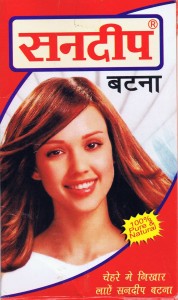 So it’s wedding season for many Panjabis in the Diaspora and one key product commonly used across South Asian groups is batnaa (the yellow mixture used on a groom/bride a day before the wedding to clear up the complexion). Guess what? Jessica Alba is now on boxes of Batnaa! When I saw this I laughed and got confused … what is going on here? I find it interesting that Alba is on the box … maybe it’s because she “looks” more South Asian than say Hillary Duff? Any other ideas?
So it’s wedding season for many Panjabis in the Diaspora and one key product commonly used across South Asian groups is batnaa (the yellow mixture used on a groom/bride a day before the wedding to clear up the complexion). Guess what? Jessica Alba is now on boxes of Batnaa! When I saw this I laughed and got confused … what is going on here? I find it interesting that Alba is on the box … maybe it’s because she “looks” more South Asian than say Hillary Duff? Any other ideas?


Also, American stars are being used to market traditional South Asian products rather than relying on Bollywood stars. Anyone else out there seen something similar in marketing other traditional South Asian products?
When I was an undergraduate, I had the opportunity to attend the World Sikh Council – North America Region‘s conference on Women in Sikhi. The conference hosted panelists and speakers to discuss three broad categories: the depiction of women in Scripture (SGGS Ji), the treatment of women in the Rehit Maryada, and future possibilities/actions for promoting gender equity. The WSC, like many Sikh institutions, was heavily male-dominated at the time, although the conference liaisons did an admirable job trying to recruit a diverse panel of women to organize, speak, and develop the program. Nonetheless, the majority of conference attendees (until the very last panel) identified as men, and there was no conversation around the agency of men as allies in the struggle for gender equity. It’s always easier to criticize than construct, and I do think the conference was an important initial step; the organizers’ hearts were in the right place, and they were certainly attempting to place women at the center of the conversation.
What I found most distressing, however, was the deep level at which the “proper role” of women in Sikhi was gendered. In emphasizing the valuation of women, most speakers and commenters focused on the following passage from SGGS Ji (p. 473):
Woman becomes his friend; through woman, the future generations come.
When his woman dies, he seeks another woman; to woman he is bound.
So why call her bad? From her, kings are born.
From woman, woman is born; without woman, there would be no one at all.
Instead of focusing on the deeper meaning of this passage — that woman is a unique and necessary partner in the faith and in humanity –, most speakers placed the significance of women solely in the context of motherhood. As a result, the impact of women’s leadership is often reduced to a single meme: woman as cultural vessel — the bearer of children (Mata) and imparter of religious knowledge and instruction. This highly gendered role and image severely limits how we conceive of the role of women, both as public figures and speakers, but also in terms of their “value-added” to society.
What is American religious tradition and how does it influence the practice of Sikhi in the US?
Recently, the Pew Forum on Religion and Public Life surveyed nearly 36,000 people of various religions (including no affiliation/atheists) with questions about their religious beliefs. Questions addressed whether individuals believed in a literal interpretation of scripture, the strength of adherents’ belief in God or universal spirit, views of one’s religion as the one true faith, as well as social and political beliefs. More information and results of the survey can be found here.
Some think the findings expose a superficiality in the practice of faiths in the US.
“Religion in America is 3,000 miles wide, but it’s only 3 inches deep,” said Professor D. Michael Lindsay, a sociologist and religion demographer at Rice University. “The issue is not that Americans don’t believe in anything. It’s that they believe in practically everything. It’s possible for Americans to hold together contradictory beliefs at the same time.” The survey found that there are Catholics who meditate, while Lindsay said other surveys have found Protestants who pray to the Virgin Mary. [link]
 One might question this conclusion that because a person holds contradictory beliefs, it means they only superficially understand/practice their religion. It may just mean that people are trying to reconcile science, their experiences, or contradictory moral beliefs with specific tenets of their own religion. The fact that they continue to hold the belief that religion proposes despite contradictory experience or scientific finding shows faith, and in my opinion, commitment.
One might question this conclusion that because a person holds contradictory beliefs, it means they only superficially understand/practice their religion. It may just mean that people are trying to reconcile science, their experiences, or contradictory moral beliefs with specific tenets of their own religion. The fact that they continue to hold the belief that religion proposes despite contradictory experience or scientific finding shows faith, and in my opinion, commitment.
Over the past few years the website Sikhitothemax.com has become one of the premier tools for English-fluent Sikh youth to access their Guru Granth Sahib. While STTM has problems that can be addressed at another time, it is important to realize the effect that this tool has had. 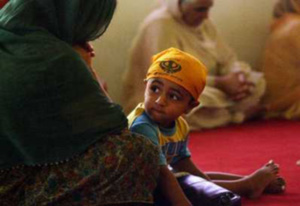 Many Gurdwaras throughout the world have added STTM translations as part of their regular programs and the projection system in the Gurdwara is fast becoming the norm.
Many Gurdwaras throughout the world have added STTM translations as part of their regular programs and the projection system in the Gurdwara is fast becoming the norm.
But is it enough?
In a recent article in the Fresno Bee, reporter Vanessa Colon looks at the question of “losing tradition in translation.”
Colon interviews a number of Central Valley Sikhs and finds that the Sikh youth are often not engaged with their Gurdwara. Although there a number of reasons, she delves into the question of language first and foremost. Some local Fresno Sikhs blamed the Sikh youth for not learning enough Punjabi. However, I see that this approach has problematic for there are now a number of Punjabi/Khalsa schools in California and beyond. However, instruction one day a week for an hour will not ever provide a sufficient language base for one to understand Gurbani.
Time for another Retreat! This time around its Saanjh and its happening from September 4th to September 7th in the Monte Toyon camp and conference center in Santa Cruz, California.
 According to their website:
According to their website:
The retreat will feature interactive workshops and discussions that will explore topics such as understanding the Guru, exploring our relationship with the Guru, Sikh identity and culture, visiting our recent and past history, Sikh politics and activism. We will utilize an interdisciplinary approach featuring spiritual, philosophical, cultural, historical, political, and activist angles to explore these diverse topics. There will also be different fun activities, sports and games to engage us. We hope to challenge participants to gain a broader and more nuanced understanding of what it means to be a Sikh while inspiring activism.
Registration is now open, and the early registration ends on July 15th, if you plan on attending than register now to avoid the late fees. For more information visit www.saanjh.org
Few programs exist that provide an in-depth study of Sikhi. Fewer exist in the United States. While there are other ventures, such as the Jakara Movement that attempt to allow entry and inspiration, Sikh Research Institute’s (San Antonio, TX) Sidak provides
distinctive learning program for young adults seeking to increase their commitment towards the Sikh faith. This intensive two-week educational experience is a unique program consisting of instructional seminars on various facets of bani (scripture), tvarikh (history), and rahit (discipline). Sessions on leadership development and community building also serve as key foundations for Sidak. [link]
From Harinder Singh‘s esteemed pedagogy, to various learned guest-speakers, and the culmination in a final project, Sidak is an amazing educational and spiritual experience. This year Sidak is being held on 13 – 26 July, 2008. For more information visit www.sikhri.org

In Ceres, California an 86 year old Sikh bibiji, Jagir Kaur Johal, was found stabbed to death in her home. The Modesto Bee reports: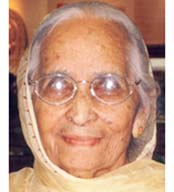
She died as a result of loss of blood from a stab wound to the chest and multiple slash wounds to the face, arms and legs, the Stanislaus County coroner’s office said.
Authorities said today the woman’s husband, 85-year-old Piara Johal, likely will be arrested.
Johal had a knife wound on his hand. The man was “suffering from some kind of confusion. He’s not sure what happened,” McKay said. “He acted as if he didn’t know of her injuries.”
“This is a hard case,” McKay said. “He’s old. He’s feeble. We don’t even know he if knows what he did — if he did it.” [link]
 About a week ago, Sex And The City (SATC) hit theaters. Many may resist an association with the dating scene that the movie and show explored with the lives of Punjabi Sikh women, and wonder whether this is appropriate for The Langar Hall. But the stories and characters of SATC reflect broad ideas that apply to all women and since every woman I know has seen or is planning to see the movie, I’m curious about how these themes apply to Punjabi Sikh women in particular and how our experiences compare with other groups. This post does not promote anything portrayed in SATC, but instead explores the stereotypes in the characters and questions how our Punjabi-Sikh-ness affects how much of those stereotypes we embrace. First, what is SATC really about?
About a week ago, Sex And The City (SATC) hit theaters. Many may resist an association with the dating scene that the movie and show explored with the lives of Punjabi Sikh women, and wonder whether this is appropriate for The Langar Hall. But the stories and characters of SATC reflect broad ideas that apply to all women and since every woman I know has seen or is planning to see the movie, I’m curious about how these themes apply to Punjabi Sikh women in particular and how our experiences compare with other groups. This post does not promote anything portrayed in SATC, but instead explores the stereotypes in the characters and questions how our Punjabi-Sikh-ness affects how much of those stereotypes we embrace. First, what is SATC really about?
the three-girls-in-the-city movie… a cinematic staple since the 1920s, has been an unusually enduring and lucrative one, exploiting each succeeding era’s anxieties surrounding women’s changing roles and helping define those eras’ new ideas of modern life. In them, audiences can watch women negotiate and sometimes subvert the forces that limn and limit their choices. [link]
Prices go up after Monday. Take a moment at work, take a quick break from your finals, but take it now! A commenter asked to for a meet-up at the conference. A few of the bloggers will be in attendance so come meet a few of the faces behind the nonsense we write! Register now at www.jakara.org
———————————————————————————
From our discussions on dividing Gurdwaras to Green Gurdwaras; from confronting the demons within to forging a new consensus; from questions of grassroots movements to moving beyond generation two blues; all are invited to attend JAKARA 2008 and discuss face-to-face these important issues.
 The Jakara Movement Sikh youth conference is only three weeks away with registration closing on June 16th. REGISTER NOW to avoid late fees.
The Jakara Movement Sikh youth conference is only three weeks away with registration closing on June 16th. REGISTER NOW to avoid late fees.
Who: YOU!
What: JAKARA 2008: Growing with our Gurdwara
Where: FRESNO, CA
When: June 19-22, 2008
Why: Because YOU need to be there. Visit the website for more information.
Yes I had urged all to attend in a different post, but consider this a friendly reminder.
Plan to attend, even if you just want to see life beyond bhangra or shoooooooooot, because you just want another Sikh T-shirt (no, you don’t get those ones).
WARNING: This is MY opinion and DOES NOT not represent anyone else on The Langar Hall. Hopefully, unlike Ennis, I won’t have to take this one down.
I am sure I am going to be labeled as a hater. I don’t care it must be said.
Scouring the news I came across a recent press release by the Sikh Council on Religion and Education. I almost feel even more embarrassed by highlighting it. SCORE, for the uninitiated, is a Sikh organization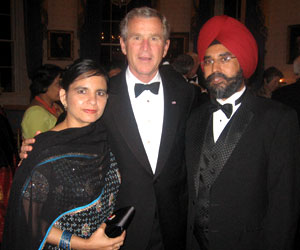 based out of Washington DC. It is the child of Dr. Rajwant Singh, a Maryland-based dentist. He is definitely one of those guys that likes to ‘speak for Sikhs.’
based out of Washington DC. It is the child of Dr. Rajwant Singh, a Maryland-based dentist. He is definitely one of those guys that likes to ‘speak for Sikhs.’
Like many Sikh organizations, SCORE is a one-man show. Don’t believe me, check out the pictures on the website, you’ll find few without Dr. Rajwant Singh. He may be the most pictured Sikh-American. (Look to the right, I just added one more!)
Now I really don’t know what SCORE does, other than look for photo opportunities, but to Dr. Rajwant Singh’s credit, he has established relationships with many political figures in Washington DC and has ingratiated himself as the ‘Sikh’ representative in many interfaith functions and communities in DC. DC loves interfaith functions! That is a good thing. Sikhs should have a representative and in the meantime we have Dr. Rajwant Singh.
Guest blogged by Mewa Singh
Yesterday’s post by Sundari got me thinking. When I saw the videos of the from the BBC footage from those days in 1984, I began wondering can the Sikh community mobilize like that again? Under what circumstances could it or even should it mass mobilize?
I thought of the mobilization that occurred with the Ram Rahim incident last year. Then while reading the internet news, I came across this Bay Area video.
CLICK HERE TO WATCH VIDEO (sorry the website doesn’t allow me to embed the video)
The media was given the title as the “Spiritual March for World Peace.” Although I have been out of the loop with friends for sometime with my Bay Area friends, what was the ‘real’ reason for the gathering? Was it celebrating the shaheedi of Guru Arjan? Do we really have Nagar Kirtans to remember martyrdoms in our history? Should the march be construed as an anti-war protest? Partially to raise awareness, but partially to learn about the initiative as well, I would love to hear about the background, perspectives, or even your thoughts on this Nagar Kirtan.
A couple of weeks ago while driving with my friend Rajpreet, I started speaking Punjabi in the middle of an English conversation. I was caught off-guard by Rajpreet’s response, “… why are we speaking the ‘secret language’ when it’s just us two in the car”? Rajpreet for some reason thought we only spoke Punjabi amongst ourselves around other English speakers when we had something “secret” to say [in the past we also spoke it when there was another Punjabi-dominant speaker with us]. However, for myself, it just happened, after some thought I feel I spoke out of the comfort of knowing that Rajpreet also understood Punjabi … not to say anything “secret”. Rajpreet’s statement made me think about how at department stores and other official places of business, I sometimes spoke a mixture of Punjabi/English to family and friends because we did not want other English speakers to know what we were saying in “translation” … but it was not always the case. Sometimes it was out of comfort, group/ethnic solidarity, or just plain funny. In my eyes, I wasn’t using Punjabi as a “secret language”, but more as a form of code-switching or hybrid language use.
Code-switching is a sociolinguistic phenomenon where bilingual speakers (i.e. Spanish/English and Punjabi/English) use terms from both languages in a sentence or conversation. In the past researchers have argued that code-switching was a sign of language inability. For example, the speaker did not know the terms for bowl or potato in English so used the Spanish or Punjabi terms. However, now sociolinguistic researchers believe it is a marker of group identity, ethnic solidarity, and relationship-building. I remember one person telling me that as part of his research on hybrid language use at a major state-owned park, he found that one park employee spoke “Spanglish” to their largely Latino cliental because she wanted to convey safety, comfort, and other feelings of “home” at this large American “place”. By creating such an environment through language she felt that the Latino cliental was more likely to explore the site and ask questions.
Thus, I ask do you ever speak Punjabi to English-speaking friends and family? If so, when?
Do you code-switch? Why?
While exploring the Sikh blogistan, I came across this link from Sikhswim (Thanks Savraj!) and wanted to share it with the rest of the Langar-ites.
Late last year, November 2007, a Sikh Seattle taxi-driver, Sukhvir Singh was brutally attacked by a drunken Luis Vazquez. Luis had been placed in Sukhvir’s taxi by two police officers, after he had been denied entry into Husky Stadium for public drunkenness and alcohol-induced bellicose behavior.
The story may have ended with the sentencing of Luis Vazquez, but it doesn’t. The story is also about the Sukhvir’s courage, faith, and forgiveness. Sukhvir was the vehicle for Waheguru’s forgiveness. Luis has been given another opportunity. The video is a bit extended, but well worth the watch.
Reflection for Monday by Guru Nanak from SGGS (p. 223) in Raag Gauri:
Khima Gahi Brath Seel Santokh
Extending forgiveness is the (true) fast, (the true act of) kindness, (the true path of) contentment

